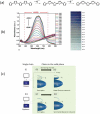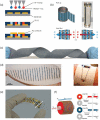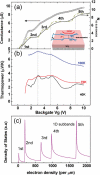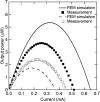Thermoelectric materials and applications for energy harvesting power generation
- PMID: 31001364
- PMCID: PMC6454408
- DOI: 10.1080/14686996.2018.1530938
Thermoelectric materials and applications for energy harvesting power generation
Abstract
Thermoelectrics, in particular solid-state conversion of heat to electricity, is expected to be a key energy harvesting technology to power ubiquitous sensors and wearable devices in the future. A comprehensive review is given on the principles and advances in the development of thermoelectric materials suitable for energy harvesting power generation, ranging from organic and hybrid organic-inorganic to inorganic materials. Examples of design and applications are also presented.
Keywords: 210 Thermoelectronics / Thermal transport / insulators; 50 Energy Materials; Thermoelectric; energy harvesting; organic; thin film.
Figures



























References
-
- Bryzek J, Grace RH.. Trillion sensor initiative. Commer Micro Manuf. 2014;7:42–46.
-
- Mori T, Priya S. Materials for energy harvesting: at the forefront of a new wave. MRS Bull. 2018;43(3):176–180.
-
- Rowe DM. Thermoelectrics handbook: macro to nano. Boca Raton (FL): CRC Press, Taylor & Francis Group; 2006.
-
- Liu W, Kim HS, Jie Q, et al. Importance of high power factor in thermoelectric materials for power generation application: A perspective. Scr Mater. 2016;111:3–9.
-
- Mori T. Novel principles and nanostructuring methods for enhanced thermoelectrics. Small. 2017;17:1702013. - PubMed
Publication types
LinkOut - more resources
Full Text Sources
Other Literature Sources
